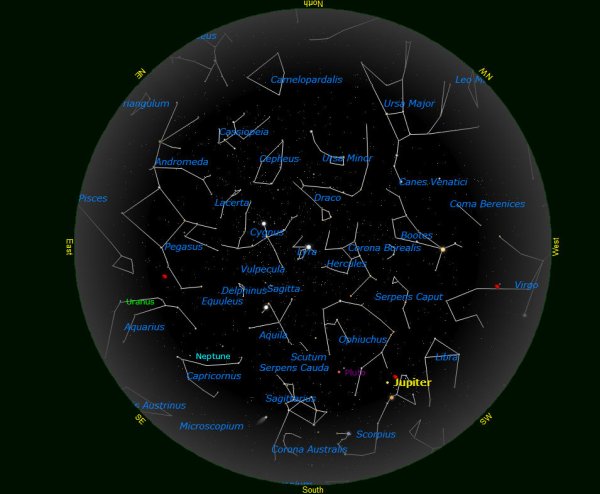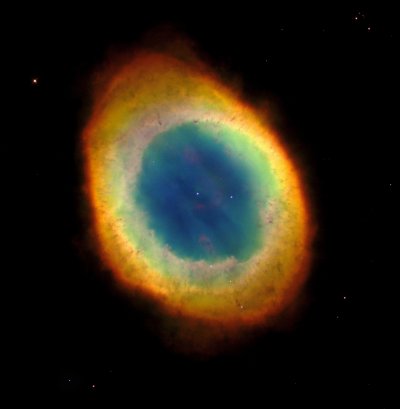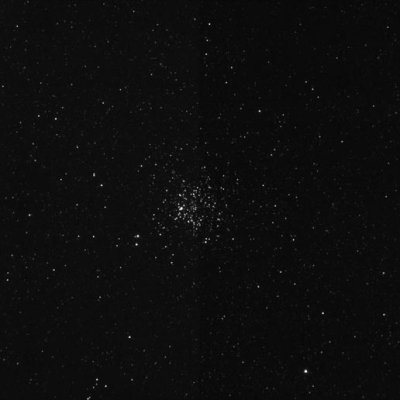
Lake County has some of the clearest, darkest skies in the country – perfect for stargazing! In this monthly column, we’ll talk about some of the things you can see at night.
Let’s start by looking at a star chart for August. This is what the night sky will look like around Aug. 15 at 9 p.m.
Face south, and look directly overhead. You will see three very bright stars that form a triangle – this is called the “Summer Triangle.” Each star is in a different constellation.
The star furthest to the west is Vega – it is in the constellation of Lyra the Harp (see the star chart). To the east is the bright star Deneb in the constellation of Cygnus the Swan. To the south, the third star in the triangle is Altair in the constellation Aguila the Eagle. Also note low in the south west is the planet Jupiter – it’s brighter than anything else in the August night skies except for the moon.
August skies have some beautiful objects that can be seen with a small to medium telescope. These objects are called deep sky objects. One of these is The Swan Nebula – it’s a big cloud of dust and gas that looks a bit like a swan. Another is the Wild Duck Cluster – a group of stars that appear close together that resemble a flock of ducks in flight. And yet another is the Ring Nebula – it looks like a smoke ring in the sky! Pictures of these are shown below.
Around the middle of August there will be a meteor shower that sometimes puts on quite a show. It’s called the Perseids. The best time to see this shower is late night (10 p.m.– midnight) on Aug. 12 through dawn on the 13th. Get a comfortable lounge chair in a dark location and look to the northeast – you won’t be disappointed!
To learn more about Lake County Skies in August, and to observe these objects through a telescope, visit Taylor Observatory (www.taylorobservatory.org) on Saturday, Aug. 18, from 8 to 11 p.m.
John Zimmerman has been an amateur astronomer for 50 years. He is a member of the Taylor Observatory staff, where, among his many duties, he helps create planetarium shows.
{mos_sb_discuss:2}

